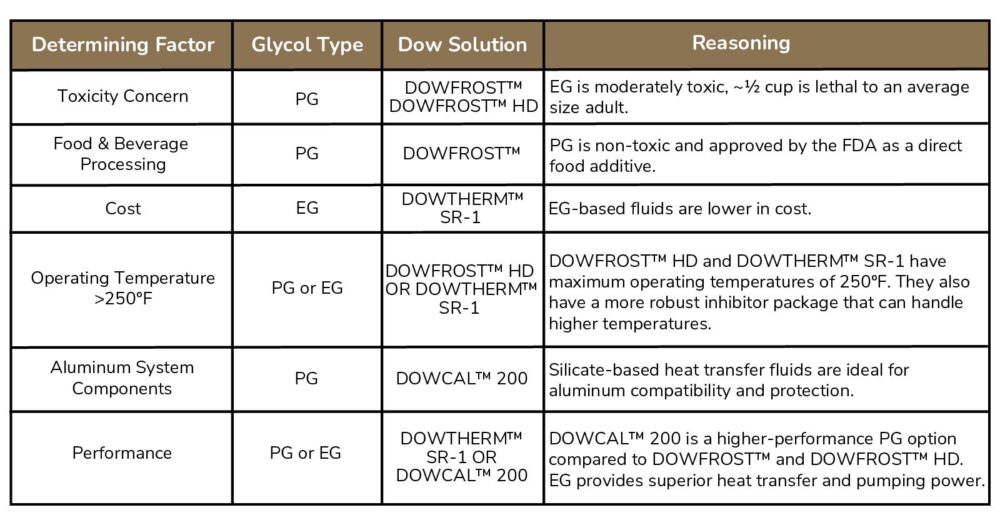Understanding Propylene and Ethylene Glycol

Glycol-based heat transfer fluids are crucial in various industrial and commercial applications. Among the most commonly used are Propylene Glycol (PG) and Ethylene Glycol (EG).
Propylene Glycol
PG is a synthetic, water-soluble liquid that is nearly odorless and colorless. Its ability to absorb water and lower the freezing point makes it highly versatile. PG is favored for its non-toxic nature, making it safe for sensitive applications where human exposure or contamination must be avoided, such as the food and beverage industry. Its excellent thermal properties, freeze protection, and versatility contribute to its wide use.
PG Products Lentus Offers:
- DOWFROST™ Heat Transfer Fluid:
- Beverage processing, specifically used in breweries, wineries, dairies, and other processes that entail fermentation cooling
- Food production and processing
- Cold room dehumidifying
- DOWFROST™ HD Heat Transfer Fluid:
- Solar hot water heating
- Ice skating rinks
- Cold storage, refrigerated warehouses, large-scale chiller systems
- DOWCAL™ 200 Heat Transfer Fluid:
- Snow melting systems
- HVAC systems, particularly those featuring aluminum
- Wind turbine systems
- DOWFROST™ LC 25 Heat Transfer Fluid:
- Direct-to-chip liquid cooling systems
- Liquid-based Datacom Equipment Cooling System (DECS)
- Glycol Cooled Computer Room AC Units (CRAC)
Ethylene Glycol
EG has a chemical structure similar to PG but with different properties. It features superior thermal conductivity and a lower freezing point but is more toxic. EG is also generally less expensive. However, its toxicity limits its use in the food and pharmaceutical industries.
EG Products Lentus Offers:
- DOWTHERM™ SR-1 Heat Transfer Fluid:
- HVAC systems
- FSRU (Floating Storage Regasification Unit) for chillers, heat pumps, temperature-sensitive materials, deicing, defrosting, dehumidifying
- Solar heating
Why Glycols Are the Preferred Heat Transfer Fluid:
- Thermal Regulation: PG and EG efficiently conduct and manage heat, making them ideal for temperature-sensitive systems.
- Corrosion Prevention: Glycols often come with inhibitor packages that prevent corrosion, enhancing equipment longevity and efficiency.
- Freeze Protection: They lower the freezing point of fluids, ensuring reliable operation in cold conditions.
- Cost-Effective: Glycols are typically more affordable compared to other chemical options.
- Safety: PG stands out for its safety in applications involving potential food contact or ingestion.
Glycol Selection Guide:

Both PG and EG serve crucial roles in heat transfer systems. The choice between the two depends on specific application needs, cost considerations, and safety requirements.
Visit our website for packaging options. To order our Glycol-Based Heat Transfer Fluids, call 270-765-2212 or email orders@LentusLLC.com.
